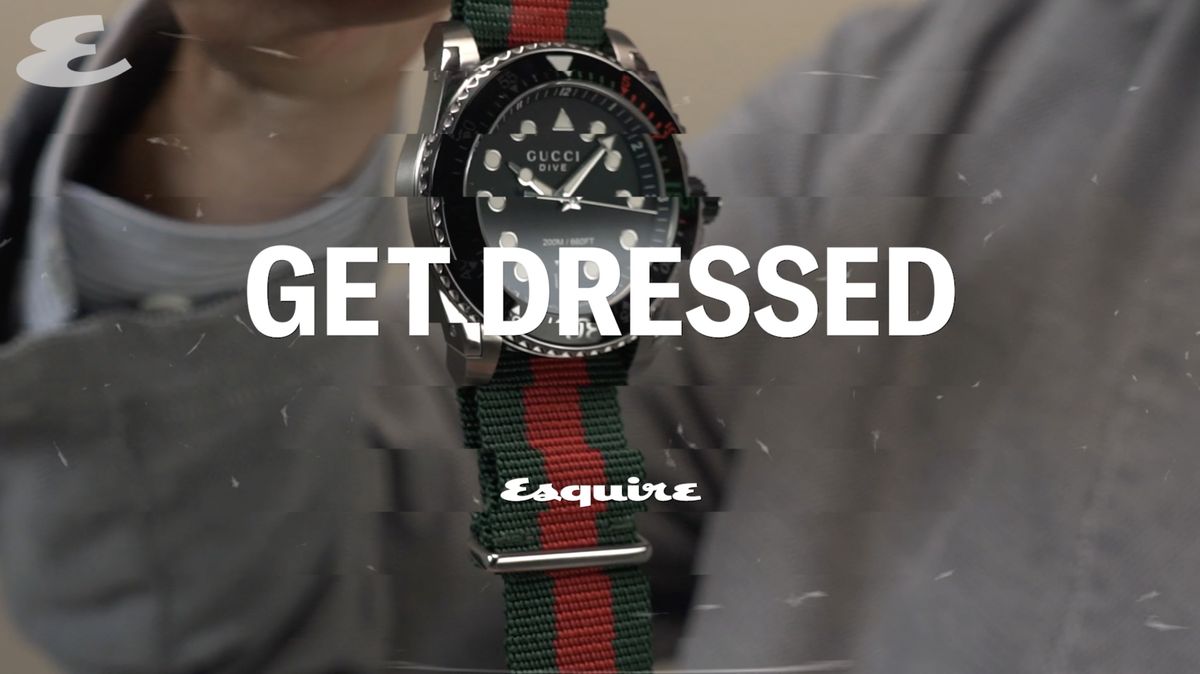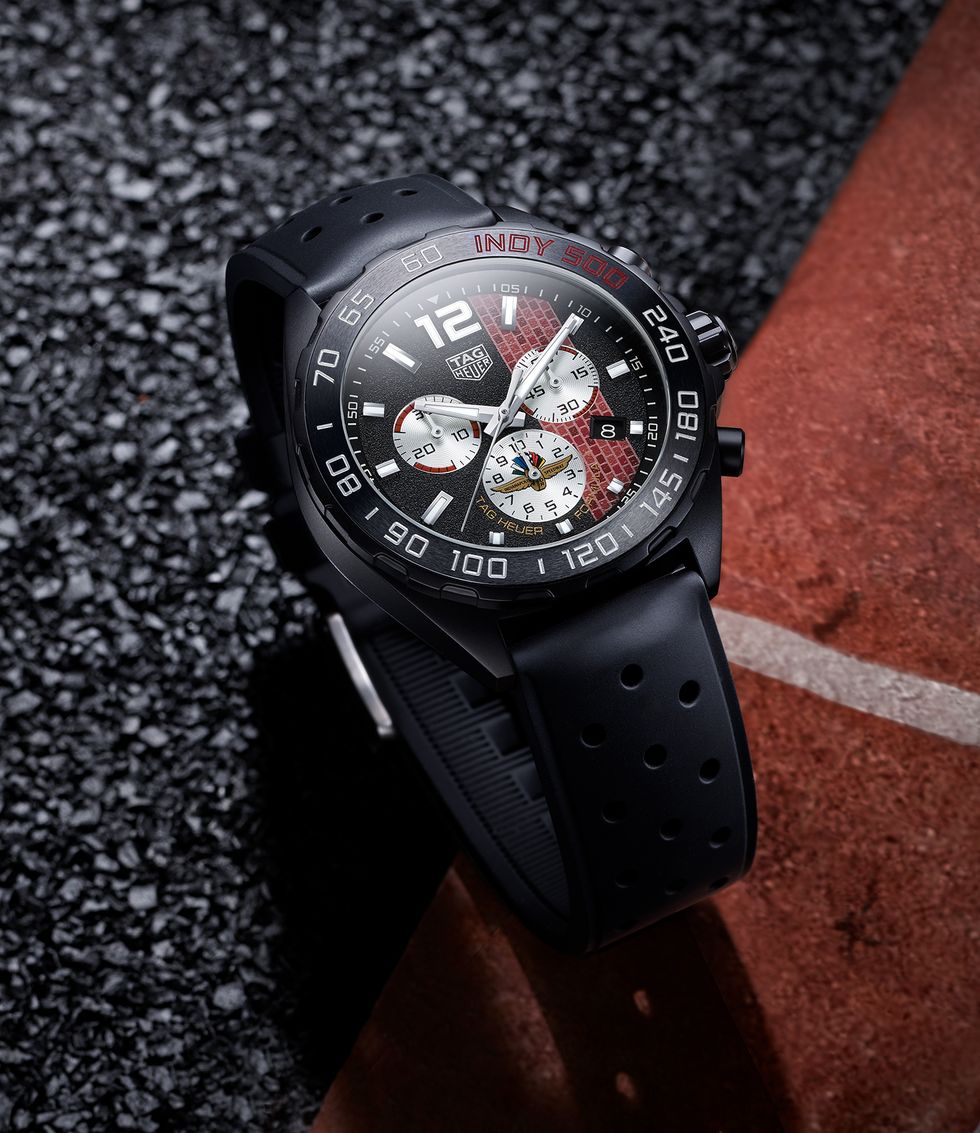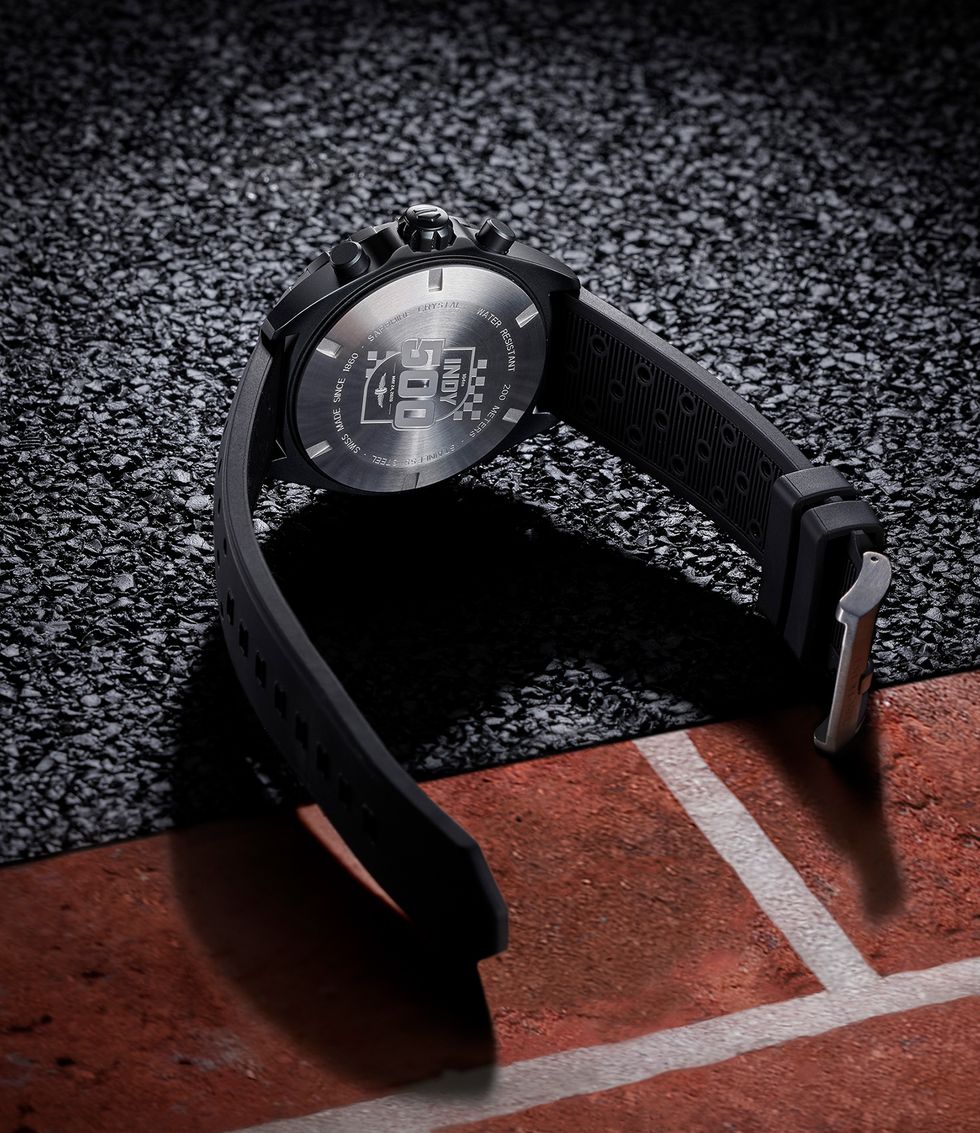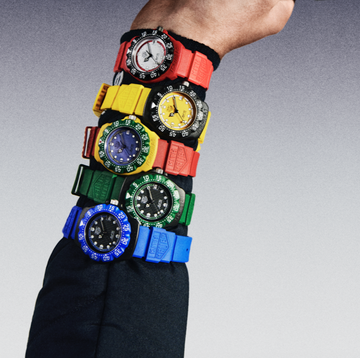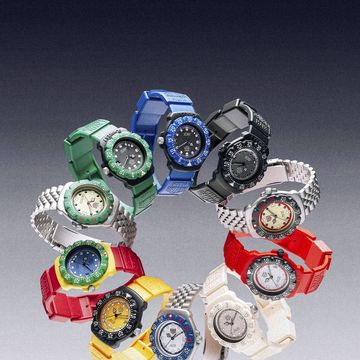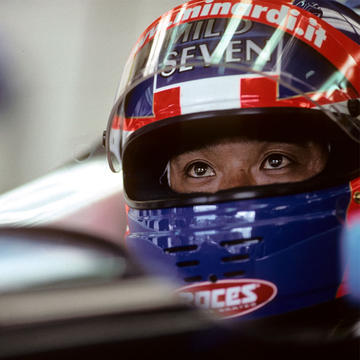Tag Heuer has been making watches for 160 years, and busily splitting seconds into ever smaller fractions for almost the entire time. But that move gained momentum at the dawn of the automotive age, when the chronograph evolved into a vital wrist computer used to quickly calculate one’s speed, or time over a set distance, and Tag Heuer – or Heuer, as it was then known – was in early and deep.
Its first dashboard-mounted chronograph appeared in 1910, its first chronograph wristwatch in 1914. In parallel it developed and launched the first stopwatch capable of measuring to the 100th of a second in 1916. As cars got faster, watchmakers needed to keep pace with the innovations, all of which landed Heuer the prestigious gig as official timer of the 1920 Olympic Games. Digital devices have made chronographs all but redundant in motor racing nowadays, but that doesn’t stop men who are into cars from being into them, too.
At Tag Heuer, cars are still in the blood, and the chronograph remains a pillar of its output. This week sees the launch of a special-edition Formula 1 watch inspired by the Indianapolis 500, whose racetrack in its early days (it was founded in 1909) was paved entirely in bricks (3.2 million of them to be precise). All but a preserved strip of the original brick on the starting line has been paved over, but the Indianapolis Motor Speedway’s nickname, the Brickyard, still survives. Winning drivers maintain a tradition of kneeling and kissing the bricks.
Tag Heuer’s Formula 1 "Indy 500" watch – an edition of 1,500 – is made of 43mm of sandblasted black diamond-like carbon (DLC) steel. In a nod to the Brickyard, a strip of bricks is painted on the dial, the tone matched in red accents on the three sub-dials which show 10th of a second, permanent seconds, and minutes. The compelling price is largely down to the quartz movement (a mechanical one would more than double the price), making this a competitive way into collecting.
Like this article? Sign up to our newsletter to get more articles like this delivered straight to your inbox
Need some positivity right now? Subscribe to Esquire now for a hit of style, fitness, culture and advice from the experts
Nick Sullivan is Creative Director at Esquire, where he served as Fashion Director from 2004 until 2019. Prior to that, he relocated from London with his young family to Boerum Hill, Brooklyn. He has styled and art directed countless fashion and cover stories for both Esquire and Big Black Book (which he helped found in 2006) in exotic,uncomfortable, and occasionally unfeasibly cold locations. He also writes extensively about men’s style, accessories, and watches. He describes his style as elegantly disheveled.
